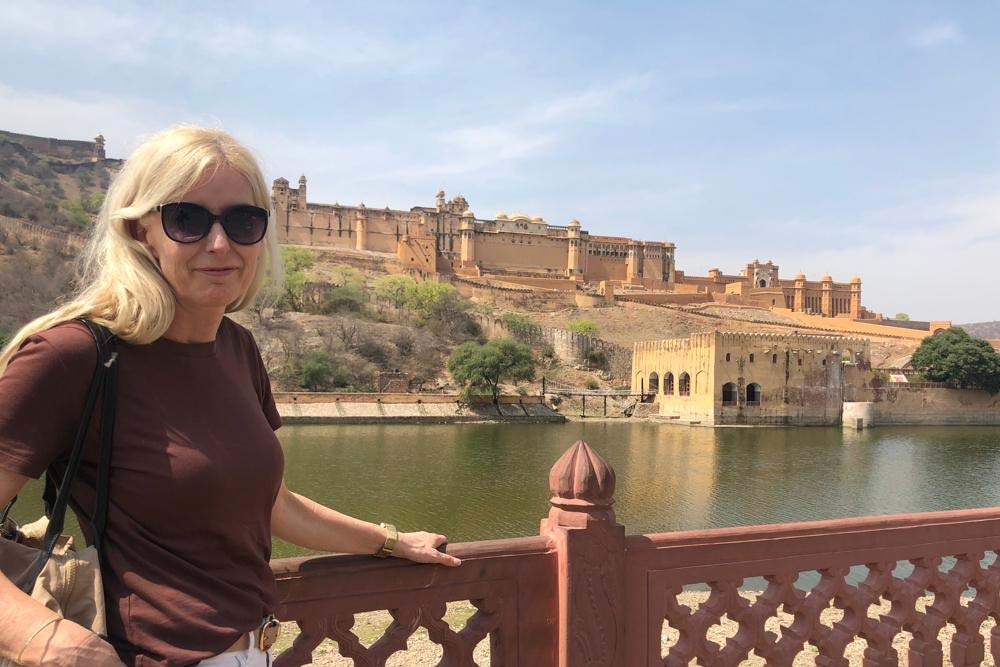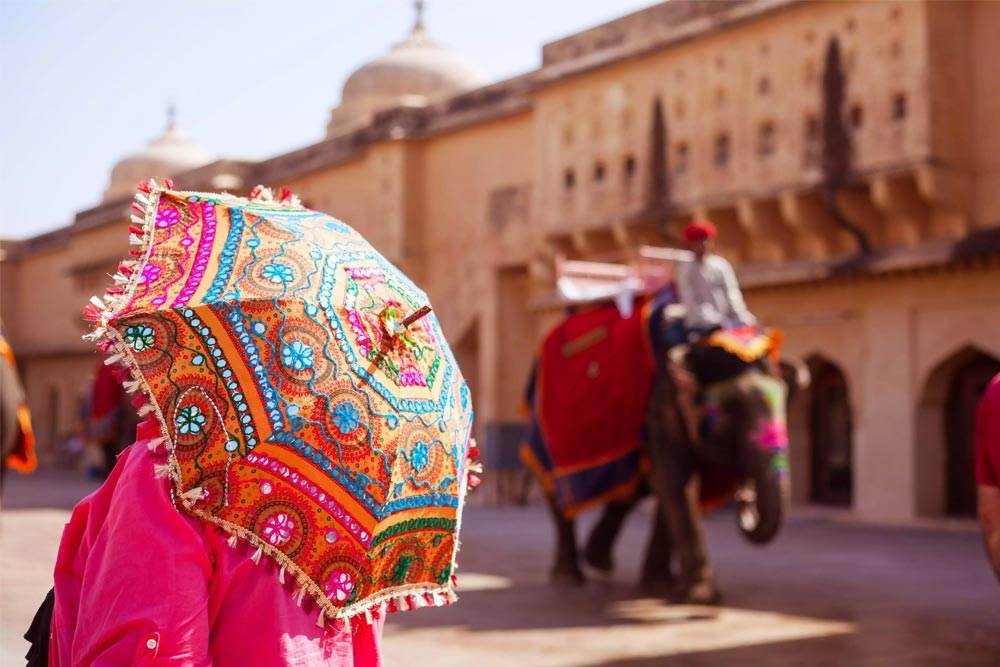Self-Guided Walking Tour of Jaipur’s Old City: Discover the Heart of the Pink City
Jaipur, the capital of Rajasthan, is renowned for its stunning architecture, rich history, and vibrant culture. Founded in 1727 by Maharaja Sawai Jai Singh II, the Old City is often referred to as the Pink City due to the distinct terracotta color of its buildings. This self-guided walking tour is designed to help you explore the heart of Jaipur, allowing you to immerse yourself in its unique atmosphere, discover its historical landmarks, shop in bustling bazaars, and savor delicious local cuisine.
The beauty of a self-guided tour lies in its flexibility—you can take your time at each stop, follow your interests, and truly engage with the local culture. Whether you are a history enthusiast, a photography lover, or a foodie, Jaipur's Old City has something to offer everyone. This guide will take you through key attractions, hidden gems, and practical tips to ensure an unforgettable experience.

A Brief History of Jaipur
To appreciate the architectural wonders and cultural richness of Jaipur, it’s essential to understand its history. The city was founded in the early 18th century as a planned city, one of the first of its kind in India. Maharaja Jai Singh II aimed to create a city that could accommodate the growing population while being functional and aesthetically pleasing.
The city was designed according to Shilpa Shastra, an ancient Indian treatise on architecture and design. The layout includes broad streets, distinct neighborhoods, and a grid pattern, making it easier to navigate. The Old City is surrounded by a wall with seven gates, symbolizing the city's fortifications and its historical significance.
Over the years, Jaipur has served as a crucial center for trade, culture, and politics in Rajasthan. Its palaces, forts, and temples reflect the glory of its past rulers. This historical context sets the stage for your exploration of the Old City, enriching your experience as you visit each landmark.
Planning Your Tour
Best Time to Visit
Jaipur experiences extreme temperatures, with scorching summers and mild winters. The best time to visit is from October to March when the weather is pleasant. Early mornings and late afternoons are ideal for exploring to avoid the heat.
What to Wear
Dress comfortably and in layers, as temperatures can vary throughout the day. Lightweight, breathable fabrics are recommended. If you're visiting temples, be sure to dress modestly.
Getting Around
While this walking tour focuses on exploring on foot, Jaipur also has options for public transportation, including auto-rickshaws and taxis. If you prefer, you can also hire a local guide for a more in-depth experience.

Key Stops on Your Walking Tour
1. Hawa Mahal
- Overview: Start your journey at Hawa Mahal, also known as the Palace of Winds. This stunning structure, built in 1799, features 953 small windows, allowing royal women to observe street life while remaining unseen.
- Architectural Highlights: Discuss the intricate latticework and unique design elements that make Hawa Mahal a masterpiece of Rajput architecture.
- Visitor Experience: Include tips on the best time to visit, entry fees, and what to expect inside. You might also highlight the view from the upper floors.
2. City Palace
- Overview: A short walk from Hawa Mahal, the City Palace complex is a blend of Rajasthani and Mughal architecture. It served as the royal residence for the Maharajas of Jaipur.
- Key Attractions within the Palace: Explore various sections, such as the Chandra Mahal, which now houses a museum, and the Mubarak Mahal, showcasing textiles and costumes.
- Cultural Significance: Discuss the importance of the City Palace in Jaipur’s history and its ongoing role in the cultural life of the city.
3. Jantar Mantar
- Overview: This astronomical observatory is a UNESCO World Heritage site, built by Maharaja Jai Singh II. It contains several architectural astronomical instruments.
- Instruments and Their Uses: Describe some key instruments, such as the Samrat Yantra (the world's largest sundial) and their historical significance.
- Visitor Experience: Offer insights on guided tours, recommended timings, and the best spots for photography.
4. Johari Bazaar
- Overview: Johari Bazaar is a bustling market famous for its jewelry, textiles, and handicrafts.
- Shopping Tips: Discuss types of products available, how to bargain effectively, and what to look for in quality items.
- Cultural Insights: Share stories from local vendors and the significance of traditional crafts in Rajasthani culture.
5. Bapu Bazaar
- Overview: Another lively market, Bapu Bazaar offers a range of textiles, handicrafts, and delicious street food.
- Street Food Guide: Provide recommendations for must-try dishes, popular food stalls, and hygiene tips when eating street food.
- Shopping Insights: Discuss local handicrafts available and tips for finding unique souvenirs.
6. Albert Hall Museum
- Overview: Conclude your tour at the Albert Hall Museum, an architectural gem showcasing a rich collection of artifacts, including textiles, pottery, and an Egyptian mummy.
- Exhibits and Collections: Highlight some of the most significant collections, their historical context, and what visitors can expect to see.
- Visitor Information: Include details about opening hours, entry fees, and guided tours.

Exploring Hidden Gems
In addition to the major attractions, Jaipur's Old City is home to several lesser-known sites that offer a glimpse into local life. Here are a few hidden gems to explore:
- Galtaji Temple: An ancient Hindu pilgrimage site located in the Aravalli hills, known for its natural springs and sacred water tanks.
- Patrika Gate: A colorful and intricately designed gateway located at the entrance of Jawahar Circle, perfect for photography.
- Chandpole Gate: A historical city gate that offers a look into the past and is surrounded by local shops and eateries.

Cultural Experiences
Engage with Jaipur’s rich culture through various experiences:
- Traditional Rajasthani Music and Dance: Attend a local performance or cultural event featuring traditional music and dance.
- Cooking Classes: Sign up for a cooking class to learn how to prepare authentic Rajasthani dishes.
- Art and Craft Workshops: Participate in workshops to learn about local crafts such as block printing, pottery, or blue pottery.

Tips for a Memorable Experience
- Engaging with Locals: Encourage interaction with local residents to gain insights into their daily lives and culture.
- Photography Tips: Share tips on capturing the vibrant essence of Jaipur through photography.
- Safety and Health Precautions: Discuss safety tips for solo travelers, and provide health recommendations, especially regarding food and hydration

Conclusion
Summarize the key experiences and highlights of the tour. Encourage readers to take their time, savor the sights and sounds, and create lasting memories while exploring Jaipur’s Old City. Reinforce the idea that this self-guided tour offers not just a glimpse into the city’s history and culture but also a personal journey of discovery.
Additional Resources
- Maps and Navigation Apps: Suggest useful maps and apps for navigating Jaipur’s Old City.
- Local Guides and Tours: Recommend options for local guides for those who prefer a more structured experience.
- Further Reading: Provide a list of books, articles, and websites for readers interested in learning more about Jaipur and its history.
Have Questions? Get in Touch!
We're here to help you plan the perfect trip and answer any questions you may have about our tours, itineraries, or services. Don’t hesitate to reach out to us!
Call Us Today: 095719 15083
Email Us: enquiry@rajasthantourdriver.com
Our dedicated team is ready to assist you with personalized travel solutions tailored to your needs. Whether you want to customize your itinerary, get recommendations, or have any concerns, we’re just a call or email away!












